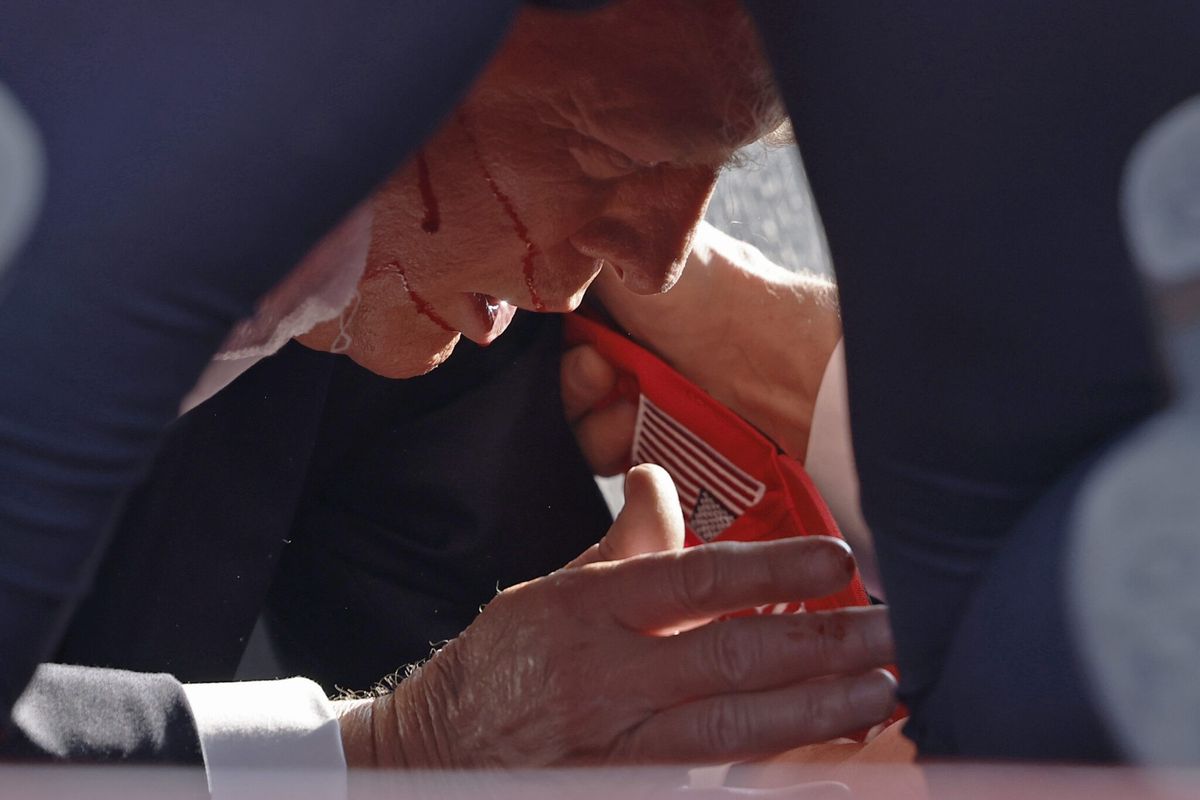At 11:00 AM, five years ago Monday, sailors on the USS Carl Vinson watched the shrouded body of Osama bin Laden slide into the North Arabian Sea. Thus concluded a ten-year manhunt which, from the fall of the Twin Towers to the secret drama of a midnight raid in the Pakistani city of Abbottabad, helped define a new era in American foreign policy.
In real terms, the search for Bin Laden played only a small part in a much larger war against a complex threat. Yet his fate underscores an idea as old as war itself, one which remains a key component of U.S. counterterrorism strategy today - the concept that leadership decapitation, the capture or killing of core decision-makers, can destroy a militant group’s ability to fight. Half a decade after Bin Laden’s death, the world is much changed but seemingly no less dangerous. So the question remains, does cutting the head of the snake destroy the body? Or, like the mythological hydra, does it only leave room for two new heads to sprout in its place?
The answer to this question is particularly important today, given America’s unprecedented reliance on leadership decapitation strategies to undermine terrorist operations. To be sure, the history of leadership decapitation stretches back long before September 2001. In the late 1960s, a U.S. counterinsurgency program named Operation Phoenix sought to identify, and in many cases kill, high-ranking Viet Cong operatives in an effort to undermine their organizational capacity. More recently, in 1998, President Bill Clinton ordered 75 cruise missile strikes against al Qaeda camps in Afghanistan and Sudan in an attempt to disrupt the group’s top leadership after U.S. embassy bombings in Kenya and Tanzania.
However, the years after 2001, and especially those following Bin Laden’s demise, have seen the strategy of leadership decapitation truly solidify into a cornerstone of U.S. counterterrorism efforts. Indeed, on April 30 2012, John Brennan, President Obama’s counterterrorism advisor at the time, publicly acknowledged the use of “targeted strikes” against al Qaeda operatives. Since that date, interpretations of the 2001 Congressional Act – the Authorization for the Use of Military Force (AUMF) – have expanded to allow leadership strikes based solely on intelligence “signatures” – detected patterns of behavior that indicate the presence of a high-level target – instead of waiting for more direct confirmation.
That these strikes work is undeniable. The list of eliminated targets, from Bin Laden himself to leaders like Ilyas Kashmiri (al Qaeda) and Abdul Rahman Mustafa al Qaduli (ISIS), speaks to the brutal efficiency of such tactics. But the long term effect of leadership decapitation is hotly contested. Supporters of the strategy claim that by removing popular and intelligent leaders you can confuse and demoralize terrorist organizations, destroying their ability to function. Furthermore, leadership succession can be difficult in such groups given their clandestine nature. Yet the rise of ISIS from the ashes of al Qaeda in Iraq (AQI) suggests that this result is short-term at best. As Brian Michael Jenkins, Cipher Brief Expert and Senior Adviser to the President of the RAND Corporation, notes: “Decapitation clearly did not terminate al Qaeda’s armed jihad, which, in response to new developments and internal dynamics, morphed into new forms.”
Another complicating factor is the type of organization targeted. Specifically, age can indicate a group’s resilience to leadership targeting. “Kill or capture a leader in the first year of the group’s existence, and the group is, on average, over 8.7 times more likely to end than a non-decapitated group. If decapitation occurs after the terrorist group has been in existence for ten years, the effect of leadership decapitation decreases by half” writes Lieutenant Colonel Bryan Price, Director of the Combating Terrorism Center at West Point and Cipher Brief Expert. Accordingly, established groups like al Qaeda and ISIS are much more difficult to incapacitate than younger, less cohesive, and less decentralized organizations.
Finally, the risk for political, diplomatic, and military blowback from leadership strikes can be acute. According to the Bureau of Investigative Journalism, U.S. drone strikes have killed between 2,467 and 3,976 people since June 2004 in Pakistan alone. Of that number, between 423 and 965 were reportedly civilians. Moral questions aside, the prevalence of such strikes on Pakistani territory have helped foment strident popular opposition to the United States and consistently exacerbated the fragile American relationship with the Pakistani government. In addition, many argue that the negative press generated by high profile cases, such as the U.S. drone strike on a wedding procession near the city of Rad’a Yemen, may inspire more terrorist recruitment than targeted killings could possibly offset.
Still, there is no doubt that leadership decapitation is an important component of the counterterrorism toolbox. Though al Qaeda remains a threat, leadership decapitation has severely undermined its ability to carry out major attacks on Western targets. Similarly, although ISIS is far from defeat, U.S. strikes on mid and top-level leadership have played a major role in curbing the group’s ability to hold territory and forcing a dramatic reduction in foreign fighter recruitment in Iraq and Syria this year, from roughly 2,000 per month to 200. Yet, as Price says “there are no ‘silver bullet’ policies or tactics that will completely eliminate the problem of terrorism.”
Reflecting on the death of perhaps the most wanted man in American history, it is impossible to regard his killing as anything but a victory in the fight against terrorist organizations. However, the years following Bin Laden’s death have shown that leadership decapitation on its own is not enough to combat this threat. In other words, we should not hesitate to cut off the head of the snake, but neither can we trust that the body will die along with it.
Fritz Lodge is an International Producer with The Cipher Brief.













